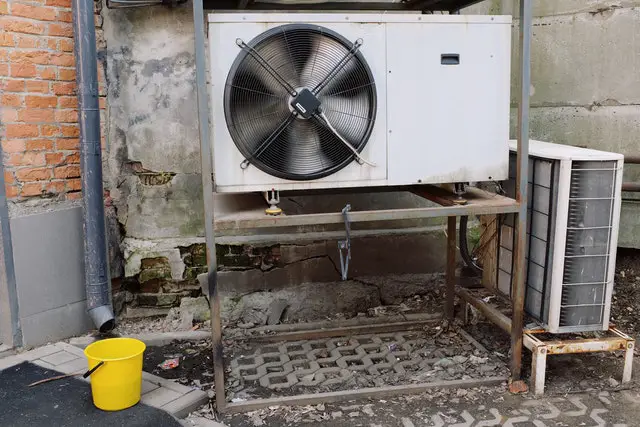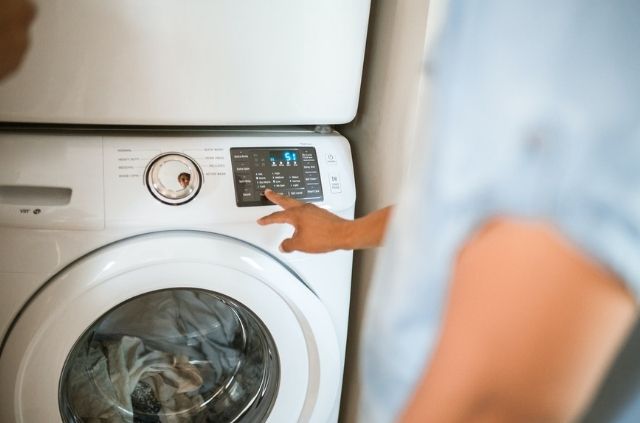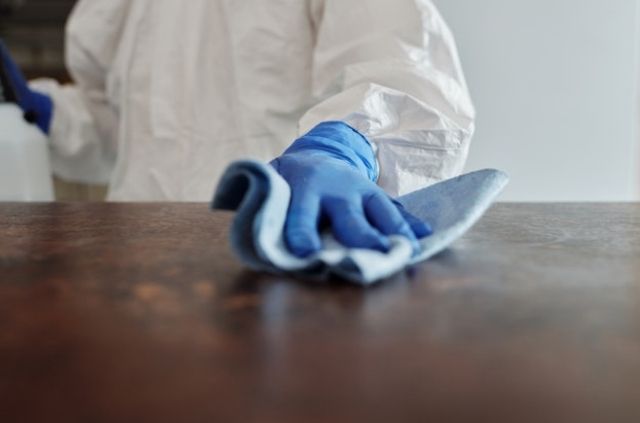Can Mold Grow on Stainless Steel?
Finding mold inside your house can be a shocking discovery. Even if you clean on a regular basis, this type of organic growth can pop up out of nowhere. I’m sure you’ve seen mold on expired food, but can mold grow on stainless steel?
Unfortunately, mold can grow on stainless steel. Even though stainless steel is not a porous material, mold spores can make their way onto the surface and cause further growth. This is most common on stainless steel appliances that can be found throughout your kitchen.
How Mold Grows on Stainless Steel
Think about all of the stainless steel appliances in your house. Washing machines, microwaves, and dishwashers are just some of them. But discovering mold on stainless steel is most common with refrigerators. Imagine you’re making spaghetti and accidentally spill marinara sauce on the floor. Now your hardwood floors are covered in red sauce!
Even after cleaning up the kitchen floor, you might not notice that some of this splatter actually landed on the bottom of the fridge. Small amounts of neglected food stuck to the surface can begin to cause mold within a matter of days. So you can see how easy it is for mold growth to appear on your stainless steel appliances.
Look for mold on these common household appliances:
- Refrigerators
- Microwaves
- Dishwashers
- Washing machines
- Drying machines
Smooth Surface Area
It’s important to note that mold alone will not grow on stainless steel. That’s due to the fact that mold is not a porous material. Porous surfaces are things like rock, concrete, and wood. These objects have very tiny holes scattered across the surface area that allow air and liquid to pass through. It’s much easier for mold to grow on these materials.
When examining mold on stainless steel, the problem arises when food and other contaminants stick to the surface. The above scenario outlined just how quickly mold growth can occur in the kitchen. Although mold may not begin to grow naturally on stainless steel, it only takes a small amount of food, or dirt to start the process.
How to Remove Mold on Stainless Steel
Do not use any type of bleach to remove mold, because it will discolor your stainless steel appliances.
1. How Did it Get There?
Before starting any kind of mold removal project, it’s important to figure out how the mold got there in the first place. This will potentially prevent any mold growth from reappearing in the future. So, how do you figure this out? Any mold found on the bottom of the refrigerator was most likely caused by excess food splatter.
People make mistakes and spill food all the time. Just remember if this happens in the future to wipe down the fridge. Don’t be afraid to get on your hands and knees to give it a good cleaning. If you find mold on a stainless steel washer and dryer, there’s probably a leaky pipe. Check all the fittings to make sure they are secure and drip free.
2. Safety First
Once you’ve figured out how the mold got their in the first place, it’s time to start cleaning. But before killing any mold you will need to wear personal protective equipment. Any time you’re removing mold, there are harmful mold spores that will get in their air. These mold spores can land on your skin, eyes, and hands.
That’s why it’s absolutely crucial to wear protective gloves and safety googles. Breathing in these mold spores can cause respirator problems (especially if you are allergic to mold), which is also why you will need to wear a face mask. Finally, wearing long clothing will protect you from any mold spores that will land on your skin.
3. Mold Removal
Once you’re safety equipment is on, it’s time to remove the mold. Mix 1 part of distilled white vinegar and 1 part of water in a spray bottle. Coat the mold generously and wait 20-30 seconds for the mixture to dwell. Then use a clean microfiber cloth to gently remove the mold from the surface. Continue this method until the mold is fully removed.
Even when removing stubborn mold from a stainless steel appliance, you need to be careful. Avoid using steel wool, because this is an abrasive material that will scratch the surface. A soft microfiber cloth is always the safest option for stainless steel. Keep in mind, if you have harsh tap water this could leave some hard water spots or stains.
4. Final Steps
When the mold has been successfully removed from your stainless steel appliance, give the surface a final wipe down. You can even apply a stainless steel cleaner and polish as the final step. This will not only give the material a perfect shine, but it can also help protect stainless steel from fingerprints, haze, and grease streaks.
You will also need to dispose of any safety equipment that was used during the cleaning process. Give the safety goggles a thorough cleaning and throw away the disposable rubber gloves and face mask. You can also throw your clothes in the washing machine and take a quick shower, so you can avoid getting mold spores on other areas of the house.
Stainless Steel Cleaning Tips
If you own a refrigerator or other type of stainless steel appliance, you know how hard it is to keep clean. The problem is that stainless steel shows everything. Every little fingerprint and streak will be so much easier to see on this material. Here are some important stainless steel cleaning tips to remember, after the mold has been removed.
- Go with the grain and move the microfiber towel in one direction to keep the surface looking new.
- If you don’t have microfiber, use a paper towel with no design to avoid scratching.
- Avoid using any kind of oven cleaner when working with stainless steel.
- Never use steel wool or any kind of abrasive pads, or sponges.
- Don’t use any cleaner that is chlorine-based, as this can damage the stainless steel.
Also remember that harsh tap water can cause water spots and discoloration. You can find hard drinking water in homes that have a well. This is important to note if you plan on using a damp paper towel or microfiber towel for a quick cleaning. It’s much safer to use distilled water, as this is a type of purified water that is basically free from contaminants.
Conclusion
I hope this article has helped you understand that mold can grow on stainless steel. Even though mold on its own will not begin the organic growth process, there are other factors at play. Old food, wet dirt, and other contaminants can make their way inside your home and onto a stainless steel appliance.
We have learned that this problem is most common in the kitchen, as spilled food can splatter and end up on the surface. Even small amounts of old food can inevitably cause mold to start growing. Just remember to eliminate the mold with vinegar and a soft microfiber cloth. This is the safest way to kill mold on a stainless steel surface.
Further Reading
Search Terms
- Can mold grow on stainless steel?
- How to remove mold on stainless steel






